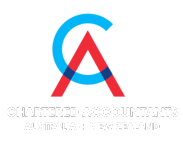Our communications frequently emphasise growth, underscoring our core purpose at BOSS: to drive the expansion of firms in Australia and New Zealand. It is essential for us to ensure a shared understanding of what “growth” truly means, aligning our objectives with your business aspirations.
Growing pains
It is often observed that many firm owners equate growth solely with an increase in revenue, perceiving this metric as the ultimate indicator of success. However, this perspective can be somewhat myopic and potentially detrimental to long-term business health.
The issue with this approach lies in its lack of preparation for the subsequent demands that accompany growth—specifically, elevated expectations from an expanding client base. Although a firm may report higher earnings compared to the previous year, without strategic enhancements in client management or service offerings, it fails to sustainably support and capitalise on these new levels of business.
This scenario can be likened to a fisherman who continues using the same net despite catching more fish each year. Without investing in a larger net, significant opportunities will inevitably pass by unseized in future seasons. Thus, it is crucial for businesses not only to celebrate financial increments but also to proactively scale their operations and service quality accordingly.
A definition of growth
Here’s a refined and more strategic perspective on growth: consider it not as an ultimate goal, but as a means to an end. Achieving growth is commendable—it provides us with the necessary resources to accomplish previously unattainable objectives A, B, and C.
Adopting the narrow view of growth simply as an increase in revenue can lead to stagnation. However, by understanding growth as a tool that propels us towards achieving specific goals, it becomes self-sustaining. This insight is critical given how frequently growth has been identified as the most significant challenge in the annual Good Bad Ugly Report across numerous firms over the years.
Focusing on growth
A significant issue with the current definition of revenue is that it may inadvertently lead a company’s leadership to concentrate exclusively on increasing sales through methods such as promotions and advertising. While this approach can be effective in attracting a large number of new clients, it raises an important question: what next?
- Can you handle the big jump in required work hours?
- Will you be able to maintain quality?
- Will you still be able to make face-time for your A-list clients?
- Will you be able to tweak service packages to draw clients into purchasing new and additional services?
- Will you have time to thoroughly vet new hires?
- Can your workflow handle the heavier workload? (Do you have a documented workflow at all?)
- Are your team members going to resent the extra workload?
Effective management of growth is akin to maintaining a valuable tool. As your revenue expands, it is crucial to allocate resources wisely to sustain and enhance this development. Neglect in oversight can lead to significant challenges such as handling dissatisfied clients or managing stressed employees, which diverts attention from more strategic improvements.
Investing in the enhancement of your office environment, recruiting top-tier talent, broadening your service offerings, transitioning from traditional paper processes to a cloud-based system, and securing personal time away are essential measures for sustaining long-term growth. These initiatives not only support the scalability of your business but also ensure its alignment with your overarching objectives.
Handling growth
To advance your business into a growth-oriented entity, it is crucial to meticulously document your workflows. This involves detailing every step of the process for any specific task in such a clear and comprehensive manner that even new employees can understand their responsibilities upon commencement of their duties.
Implementing documented processes allows for more efficient identification and resolution of bottlenecks within the workflow, enabling a proactive approach rather than relying on speculative solutions. Furthermore, this practice significantly reduces the need for extensive training when integrating new hires, thereby minimising both time spent on supervision and the potential stress associated with micromanagement.
Moreover, having established workflows not only enhances internal efficiency but also bolsters your firm’s professionalism in client interactions. With well-defined processes in place, you can provide clients with precise updates and definitive timelines for project completion rather than approximate estimates. This level of clarity in communication underscores your company’s commitment to reliability and service excellence.
Get started on your growth now
Even if your company is newly established, you can strategically position it for growth by implementing a documented workflow. A well-defined workflow is scalable; chaos, typically, is not—and certainly not in any beneficial manner.
Instituting a structured workflow enhances both productivity and quality within your operations. It also liberates time, allowing for increased client interactions. Such engagement not only fosters referrals but also encourages existing clients to expand their use of your services. This progression fuels resource acquisition that can further refine aspects of your workflow, thereby accelerating growth and creating a positive feedback loop.
Ultimately, this systematic approach provides the necessary resources to achieve the long-term objectives set forth for your business.




